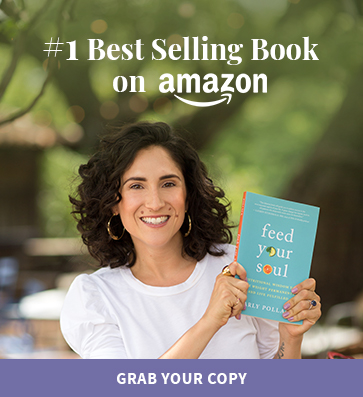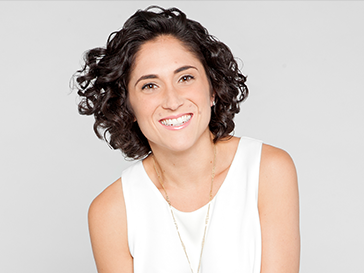Are You Using The Best Protein Powder? 3 Steps To Find Out
June 05, 2019

I remember the first protein powder I ever bought. I was in GNC (don’t judge me, I was a guidette living in New Jersey) and I bought Myoplex Light by EAS. It tasted like cement but the woman on the box was ripped so I figured I must be doing something healthy.
After I smartened up, I started buying Jay Robb’s Whey Protein Isolate. It tasted less like cement and more like Elmer’s glue, which told me I was certainly heading in the right direction.
Then I got actually smart, as in, I got my Master’s Degree in Holistic Nutrition, and I stopped buying protein powders from grocery stores altogether and found the protein powder I use today (which I love and give to my 1-year-old daughter on the daily).
If this topic bores you, I don’t blame you. Just scroll to the bottom of this educational rant and grab the Designs For Health collagen and amino acid protein powder my entire family uses. If you want to become an expert on picking your own protein powder, read on…
Let’s break this down into steps:
Step 1: Identify the source and quality of protein
Step 2: Find out how it goes from protein to powder (what’s the process?)
Step 3: Learn everything you can about the company, its practices, and its testing
Step 1: Identify the source and quality of protein
Whey protein is extracted from the milk of the animal. I don’t like to mess with dairy since so many of us react to it. If you love whey protein, hold tight and keep reading.
Collagen protein is from the bones/carcass (aka where collagen comes from). This is my pick for protein source because it’s completely dairy-free and contains amazing gut healing and anti-inflammatory properties.
It's essential that animal protein is from organic, pasture-raised animals because all mammals store toxins in their fat, bones, and breast milk. These sources are a direct reflection of what the animal ate. What your food eats is equally as important as what you eat! There are vegan (hemp or pea proteins), but the downside here, if you aren’t vegan, is that you aren't getting a complete amino acid profile. Plus, it’s hard to get enough protein from pea (although pea is my favorite vegan source of protein and if you’re vegan, this is my go-to source).
If you like whey….
WHEY ISOLATES v. CONCENTRATES (i.e. whey protein isolate)
This explains the state of the protein molecule after they extract the protein. You want it in concentrate form, meaning the protein molecule is still intact. Minimal processing helps to uphold the integrity of the amino acids plus you get immune benefits that are stripped when using an isolate.
What else is in it?
ADDITIVES / CHEMICALS
We don't want them. Period. You're drinking this to be healthy, right!? If you don’t know what an ingredient is, you need to do a Google search. I’ll get you started on some “classic” chemicals:
- Artificial Flavoring: code for “flavors” produced in the lab from things humans would never normally eat, like petroleum. If it says artificial flavoring, that’s an immediate nix.
- Cellulose Gum: a fiber that our body can’t digest. It typically comes from things like wood or cotton lint. Its added to prevent the protein powder from caking but also can contribute to digestive disorders. Great.
- Soybean, canola, and sunflower oils: all are highly processed oils that cause inflammation in the body. Pass!
SUGAR CONTENT
Zero sugar but tastes sweet? It’s either from natural sources (stevia, monk fruit, or xylitol) or it’s made from chemicals. If it's low sugar, first thing I do is see how it's sweetened.
Here are names of some artificial sweeteners… you don’t have to memorize them but get familiar with some top offenders. Roll call!
- Saccharin
- Acesulfame
- Aspartame
- Neotame
- Sucralose
Step 2: Find out how it goes from protein to powder
I’ve called plenty of protein powder companies to find out their process from beginning to end. Interestingly, a lot of these companies have a “proprietary” process, a.k.a, “we don’t want to tell you because you won’t be happy”.
When I called Designs for Health to find out how my collagen powder came to be, this was their response: “The PurePaleo protein (HydroBEEF) is made from the carcass of the animal after all the marketable cuts have been removed. This carcass, muscle tissue, other soft tissues, and the bones are cooked, under pressure. The only protein powder that actually has the collagen on the spec sheet is our hydrobeef.”
Step 3: Learn everything you can about the company, its practices, and its testing
THIRD PARTY TESTING / GMP CERTIFICATION
Because the FDA doesn't look at supplements, many are unregulated. But there is a very well established organization (think “FDA of supplements”) called the GMP (Good Manufacturing Process) Certification. This is a must.
Another thing to look for is making sure the supplement or powder is third-party tested so you know what's on the label is really what's in the bottle.
Here's a pretty high-level article, but adds some more details if you want more info.
Whew! Just had to push my glasses up against my nose #dorkalert.
This is the protein powder I suggest to all my clients, my family, and what I’ve drunk myself for years now. I love the taste (chocolate is my favorite, but vanilla and the unsweetened are awesome too).
This brand checks all the boxes above so you know you’re getting the best.
And here’s a code for 10% off (code PROTEIN10) because...that’s what friends are for! Keep smiling, keep shining...
Now you’ll be the smartest meat-head at the gym.
P.S.
Here are those links again - and don’t forget your 10% off (code PROTEIN10)! Free shipping on orders $50 and above!
Unsweetened/Unflavored Collagen
Chocolate Pea






